From now till Sept. 30, the public can submit names to be stenciled on microchips that will fly on the Mars 2020 rover and receive a souvenir boarding pass.
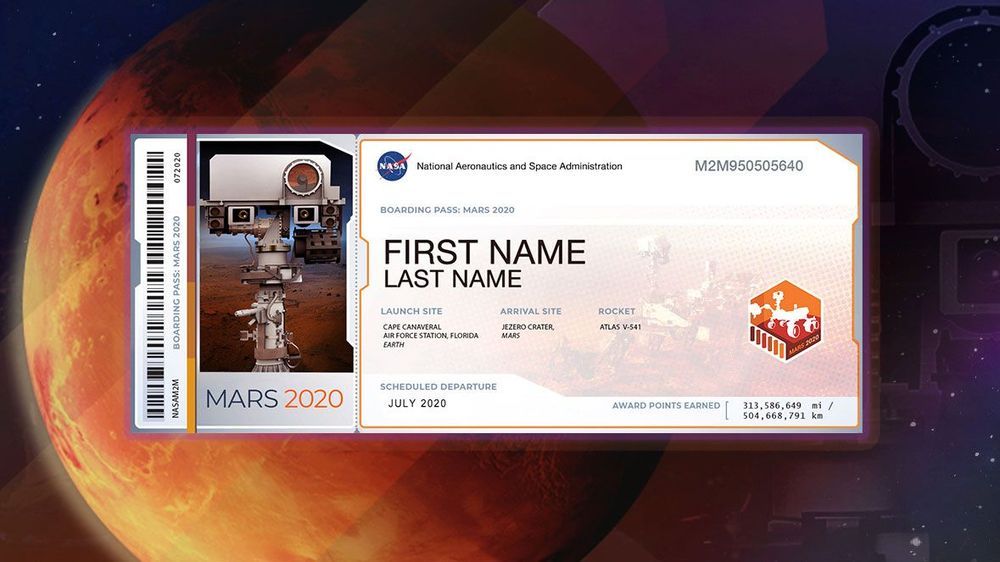

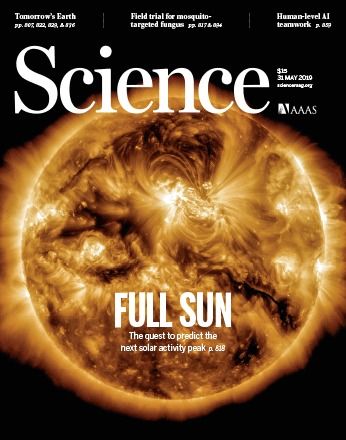
Gating—controlling the state of one qubit conditioned on the state of another—is a key procedure in all quantum information processors. As the scale of quantum processors increases, the qubits will need to interact over larger and larger distances, which presents an experimental challenge in solid-state architectures. Wan et al. implemented the 20-year-old theoretical proposal of quantum gate teleportation that allows separated qubits to interact effectively. They deterministically teleported a controlled-NOT gate between two computational qubits in spatially separated zones in a segmented ion trap, demonstrating a feasible route toward scalable quantum information processors.
Science, this issue p. 875
Large-scale quantum computers will require quantum gate operations between widely separated qubits. A method for implementing such operations, known as quantum gate teleportation (QGT), requires only local operations, classical communication, and shared entanglement. We demonstrate QGT in a scalable architecture by deterministically teleporting a controlled-NOT (CNOT) gate between two qubits in spatially separated locations in an ion trap. The entanglement fidelity of our teleported CNOT is in the interval (0.845, 0.872) at the 95% confidence level. The implementation combines ion shuttling with individually addressed single-qubit rotations and detections, same- and mixed-species two-qubit gates, and real-time conditional operations, thereby demonstrating essential tools for scaling trapped-ion quantum computers combined in a single device.
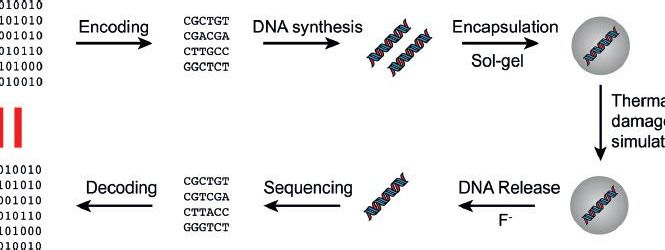
Circa 2015
ETH researchers have found an error-free way to store information in the form of DNA, potentially preserving it for millions of years: encapsulate the information-bearing segments of DNA in silica (glass), using an error-correcting information-encoding scheme.
Scrolls thousands of years old provide us with a glimpse into long-forgotten cultures and the knowledge of our ancestors. In this digital era, in contrast, a large part of our knowledge is located on servers and hard drives, which may not survive 50 years, let alone thousands of years. So researchers are searching for new ways to store large volumes of data over the long term.
Recently, 300,000 year old mitochondrial DNA from bears and humans has been sequenced. DNA has also been utilized as a coding language, for applications in forensics, product tagging, and DNA computing, the researchers note.

Practical quantum computers may be another step closer to reality – and like so many technologies, we have graphene to thank for it. The bits of information in quantum computers (qubits) can famously exist in two states at once, and now researchers from MIT and other institutions have managed to record just how long that superposition state can last in a qubit made of graphene.
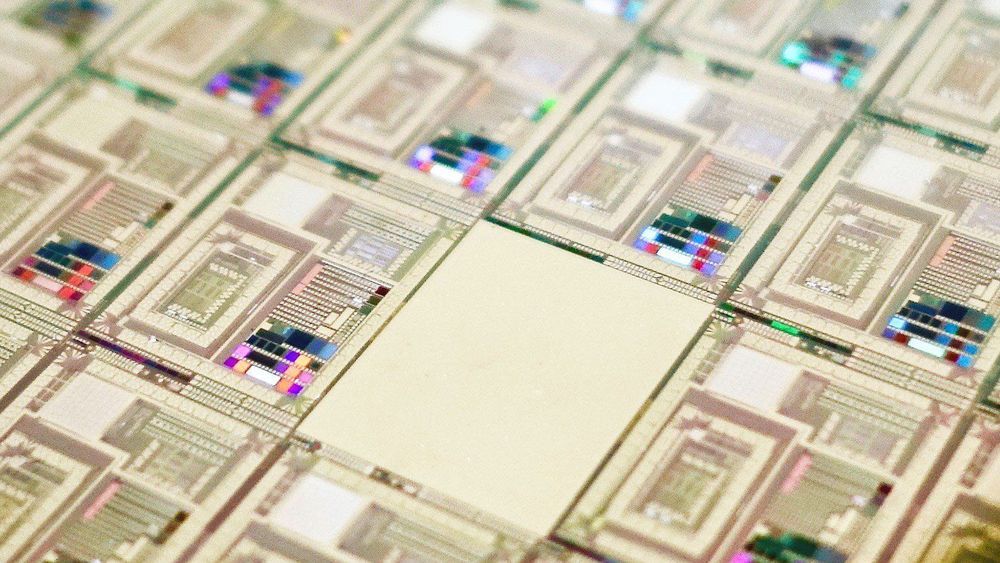


The quantum computing effort at Honeywell appears to be heating up. Over the last several months, the company has announced a series of new developments in its trapped ion quantum computer research, which suggests that it is close to launching its first system.
If you weren’t aware that Honeywell had a quantum computing program, you are not alone. While the occasional terse news statement about this effort is posted on the company’s quantum solutions page, the tech giant has otherwise been rather tight-lipped about its plans in this area. A request from us for more information was met with: “We don’t have anything further to add on this front.”
Since October of last year, Honeywell has been offering these smaller tidbits on a regular basis. In November, the company revealed it had started testing its first-generation qubit devices, followed in January by the claim that it had “demonstrated record-breaking high fidelity quantum operations” on its trapped-ion qubits. In March, it announced it had demonstrated “parallel operating zones” on the device, which it believes will provide faster execution and more flexible qubit connectivity.
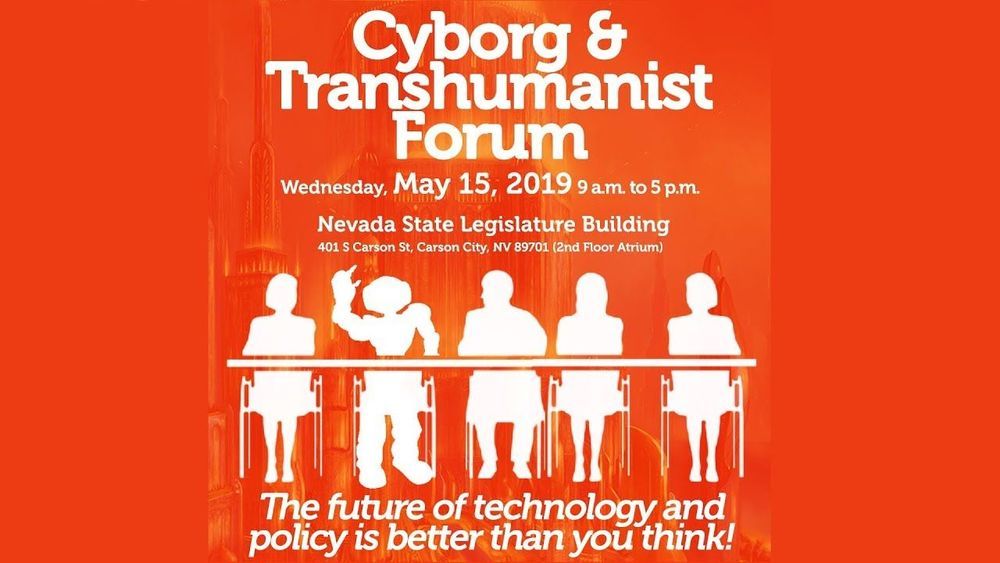
The Cyborg and Transhumanist Forum at the Nevada Legislature on May 15, 2019, marked a milestone for the U.S. Transhumanist Party and the Nevada Transhumanist Party. This was the first time that an official transhumanist event was held within the halls of a State Legislature, in one of the busiest areas of the building, within sight of the rooms where legislative committees met. The presenters were approached by tens of individuals – a few legislators and many lobbyists and staff members. The reaction was predominantly either positive or at least curious; there was no hostility and only mild disagreement from a few individuals. Generally, the outlook within the Legislative Building seems to be in favor of individual autonomy to pursue truly voluntary microchip implants. The testimony of Anastasia Synn at the Senate Judiciary Committee on April 26, 2019, in opposition to Assembly Bill 226 — https://www.youtube.com/watch?v=kXGessk5c24 — is one of the most memorable episodes of the 2019 Legislative Session for many who heard it. It has certainly affected the outcome for Assembly Bill 226, which was subsequently further amended to restore the original scope of the bill and only apply the prohibition to coercive microchip implants, while specifically exempting microchip implants voluntarily received by an individual from the prohibition. The scope of the prohibition was also narrowed by removing the reference to “any other person” and applying the prohibition to an enumerated list of entities who may not require others to be microchipped: state officers and employees, employers as a condition of employment, and persons in the business of insurance or bail. These changes alleviated the vast majority of the concerns within the transhumanist and cyborg communities about Assembly Bill 226.
This Cyborg and Transhumanist Forum comes at the beginning of an era of transhumanist political engagement with policymakers and those who advise them. It was widely accepted by the visitors to the demonstration tables that technological advances are accelerating, and that policy decisions regarding technology should only be made with adequate knowledge about the technology itself – working on the basis of facts and not fears or misconceptions that arise from popular culture and dystopian fiction. Ryan Starr shared his expertise on the workings and limitations of both NFC/RFID microchips and GPS technology and who explained that cell phones are already far more trackable than microchips ever could be (based on their technical specifications and how those specifications could potentially be improved in the future). U.S. Transhumanist Party Chairman Gennady Stolyarov II introduced visitors to the world of transhumanist literature by bringing books for display – including writings by Aubrey de Grey, Bill Andrews, Ray Kurzweil, Jose Cordeiro, Ben Goertzel, Phil Bowermaster, and Mr. Stolyarov’s own book “Death is Wrong” in five languages. It appears that there is more sympathy for transhumanism within contemporary political circles than might appear at first glance; it is often transhumanists themselves who overestimate the negativity of the reaction they expect to receive. But nobody picketed the event or even called the presenters names; transhumanist ideas, expressed in a civil and engaging way – with an emphasis on practical applications that are here today or due to arrive in the near future – will be taken seriously when there is an opening to articulate them.
The graphics for the Cyborg and Transhumanist Forum were created by Tom Ross, the U.S. Transhumanist Party Director of Media Production.
Become a member of the U.S. Transhumanist Party / Transhuman Party free of charge, no matter where you reside: https://transhumanist-party.org/membership/
References
Gennady Stolyarov II Interviews Ray Kurzweil at RAAD Fest 2018 — https://www.youtube.com/watch?v=10dFgrjdfqY

It’s comforting to think of the body as a machine we can trick out. It helps us ignore the strange fleshy aches that come with having a meat cage. It makes a fickle system—one we truly don’t understand—feel conquerable. To admit that the body (and mind that sits within it) might be far more complex than our most delicate, intricate inventions endangers all kinds of things: the medical industrial complex, the wellness industry, countless startups. But it might also open up new doors for better relationships with our bodies too: Disability scholars have long argued that the way we see bodies as “fixable” ultimately serves to further marginalize people who will never have the “standard operating system,” no matter how many times their parts are replaced or tinkered with.
Tech gurus are obsessed with treating bodies like machines—something a 30-year-old cartoon about a tricked-out detective suggests won’t work.
